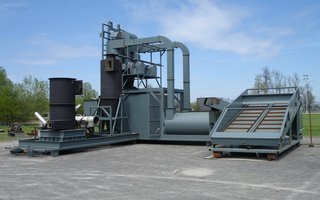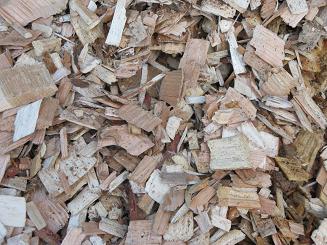by EL. Taylor and S. Ashton

In areas where the cost of transporting wood remains a challenge, portable wood-to-energy conversion units may be an option. Small-scale, portable pyrolysis (a system that turns wood directly into an oil and char) and gasification (a system that turns wood directly into a gas) units can be towed to a harvesting site and utilized to produce fuel on-site. It is important to note, however, this technology is still largely in its experimental stages.

In-woods pyrolysis can convert forest biomass into liquid form, which simplifies and reduces transportation costs. Pyrolysis oil (bio-oil) has comparatively higher energy density than raw forms of biomass, 6 to 7 times that of green whole tree chips (Badger and Fransham 2006). Produced under the right technology, Bio-oil can be used as a substitute or as a blend with No. 2 fuel oil for heating, power plant fuel, or for use in the chemical industry. A pyrolysis facility can be mobile, transportable, relocatable, or stationary. The cost and production capacities for the two facilities of interest are outlined in Table 1. In-woods, mobile pyrolysis costs $159 per ton compared to $73 per ton for a transportable facility at a more central location.
Click on the following link to learn more about Comparisons of In-Woods Densification Options in the Western Gulf
References
- Badger PC, Fransham P. 2006. Use of mobile fast pyrolysis plants to densify biomass and reduce biomass handling costs—A preliminary assessment. Biomass & Bioeenrgy. 30:321-325.
- Polagye BL, Hodgson KT, Malte PC. 2007. An economic analysis of bio-energy options using thinnings from overstocked forests. Biomass and Bioenergy 31:105-125.
